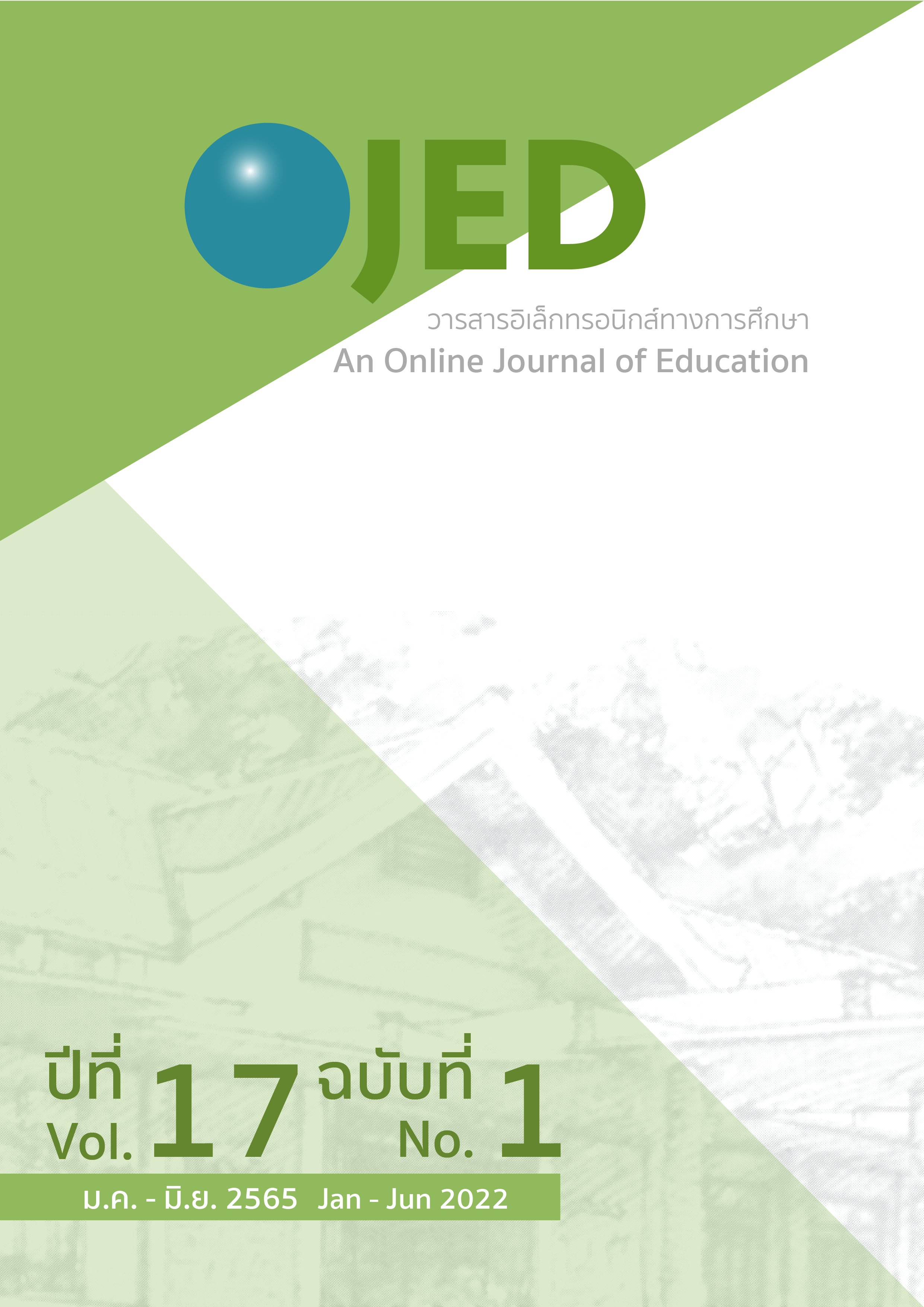Effects of Vocabulary Instruction Using Bottom-up and Top-down Instructional Approaches on Bhutanese Secondary Students’ Vocabulary Knowledge
DOI:
https://doi.org/10.14456/ojed.2022.13Keywords:
Bottom-Up Instructional Approach (BU), Top-Down Instructional Approach (TD), vocabulary knowledge, secondary school studentsAbstract
This study aimed to (1) investigate the effectiveness of bottom-up (BU) and top-down (TD) instructional approaches on ESL learners’ vocabulary learning, (2) compare the effects of the two approaches on the development of vocabulary knowledge of Bhutanese secondary school students, and (3) explore the learners’ opinions towards the two approaches. The participants of this study were seventy tenth-graders from a Bhutanese secondary school. They were divided into two groups: BU and TD, and each group of students learned vocabulary through a different instructional approach. The learners underwent treatment sessions for two months to learn 168 new academic vocabularies. The students’ English vocabulary knowledge was measured quantitatively through vocabulary tests: the vocabulary size test (VST) and the updated vocabulary levels test (UVLT). The data were analyzed through descriptive and inferential statistical techniques. This was followed by a semi-structured interview to extract the views of the participants on the instructional approaches for qualitative data. A total of eight participants (two each of high performers and low performers) from two groups were selected for the interview and the data were analyzed through content analysis. The research findings revealed that both approaches were effective in helping to improve the students’ vocabulary knowledge but the results also showed that the improvement in the students’ vocabulary knowledge attributed to the BU instructional approach was not significantly different from that of the TD instructional approach. Most participants expressed positive views towards both approaches.
References
Journal of Applied Linguistics and Language Research, 4(1), 91-108.
Alqahtani, M. (2015). The importance of vocabulary in language learning and how to be taught. International journal of teaching and education, 3(3), 21-34.
Bromley, K. (2004). Rethinking Vocabulary Instruction. Language and Literacy Spectrum, 14, 3-12.
Carter, R., & McCarthy, M. (2014). Vocabulary and language teaching. Routledge.
Chin, C. (2002). Context, semantic mapping, and word lists: Effectiveness on EFL learners’ vocabulary growth. English Teaching, 57(4), 245-266.
Eskey, D. E. (1988). Holding in the bottom: An interactive approach to the language problems of second language readers. Interactive approaches to second language reading, 6, 93-100.
Hedge, T. (2001). Teaching and learning in the language classroom (Vol. 106). Oxford university press Oxford, England.
Helman, L. A. (2008). English words needed: Creating research-based vocabulary instruction for English learners. In What research has to say about vocabulary instruction (pp. 211-237). International Reading Association.
Kwon, S. (2004). How to present new words: An empirical study & students' perception. ENGLISH TEACHING-ANSEONGGUN-, 59, 247-270.
LaPrairie, M. (2014). A case study of English-medium education in Bhutan Institute of Education, University of London].
Lee, J.-W., & Yoon, K.-O. (2019). Alternative Vocabulary Learning Approaches in EFL Setting: Bottom-up or Top-down? English Teaching, 74(3).
Manzo, U. C., & Manzo, A. V. (2008). Teaching vocabulary-learning strategies: Word consciousness, word connection, and word prediction. What research has to say about vocabulary instruction, 80-105.
Moskovsky, C., Jiang, G., Libert, A., & Fagan, S. (2015). Bottom‐up or top‐down: English as a foreign language vocabulary instruction for Chinese university students. Tesol Quarterly, 49(2), 256-277.
Nation, I. S. (2013). Learning vocabulary in another language 2nd ed. In: Cambridge, United Kingdom: Cambridge University Press.
Pae, T.-I. (2016). A Study on a Model of L2 Vocabulary Achievement for Korean University EFL Learners. English Teaching, 71(3).
Richards, J. C., & Renandya, W. A. (2002). Methodology in language teaching: An anthology of current practice. Cambridge university press.
Scott, J. A., Nagy, W. E., & Flinspach, S. L. (2008). More than merely words: Redefining vocabulary learning in a culturally and linguistically diverse society. What research has to say about vocabulary instruction, 182-210.
Shohamy, E., & Inbar, O. (1991). Validation of listening comprehension tests: The effect of text and question type. Language testing, 8(1), 23-40.
Tsui, A. B., & Fullilove, J. (1998). Bottom-up or top-down processing as a discriminator of L2 listening performance. Applied linguistics, 19(4), 432-451.
Umurova, I. S. Q. (2018). Vocabulary and language teaching methods. English Language, Literature & Culture, 3(4), 42-47.
Downloads
Published
How to Cite
Issue
Section
License
Copyright (c) 2022 An Online Journal of Education

This work is licensed under a Creative Commons Attribution-NonCommercial-NoDerivatives 4.0 International License.




